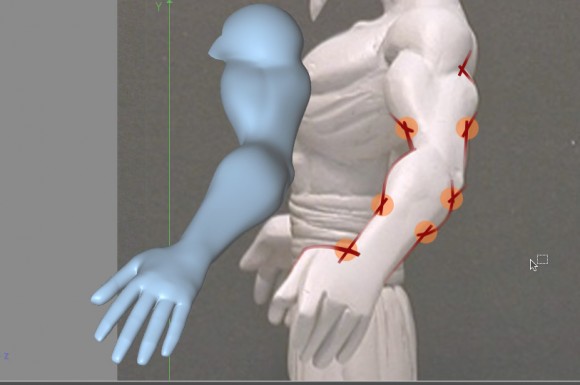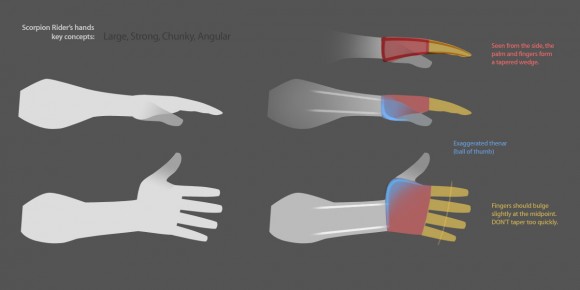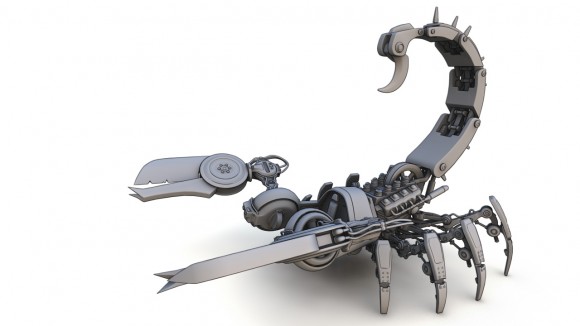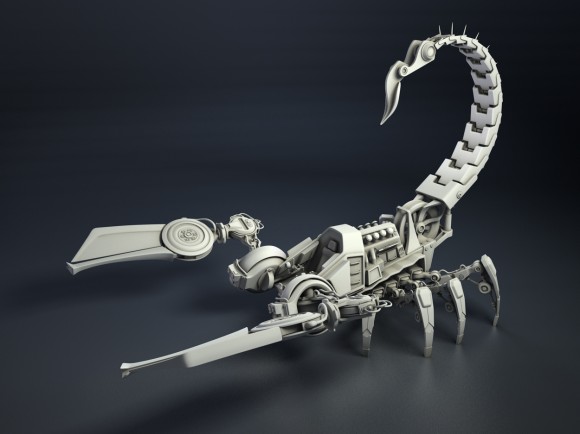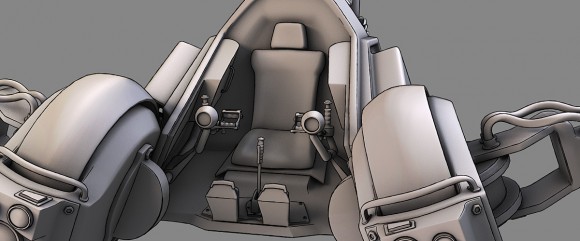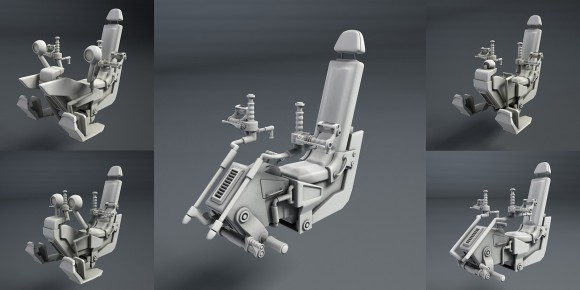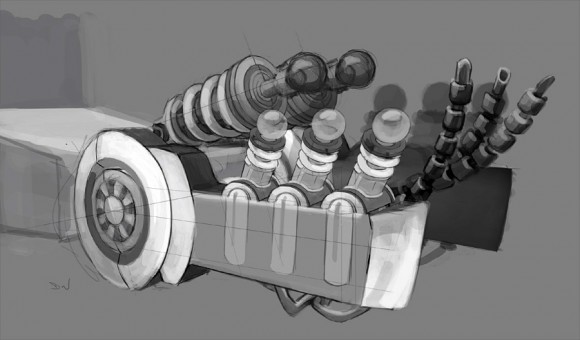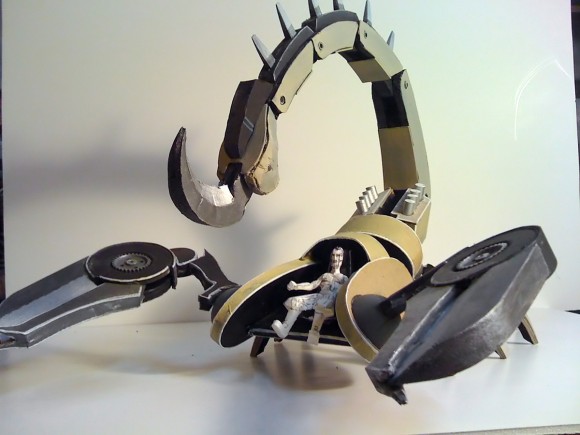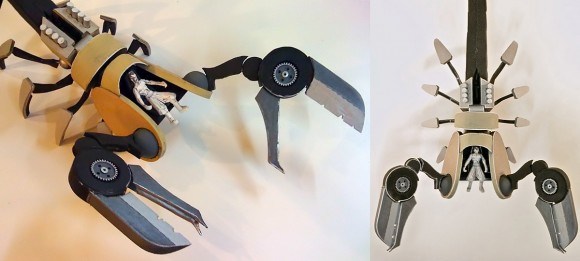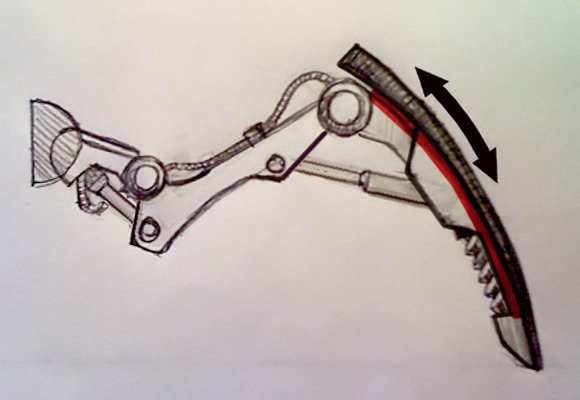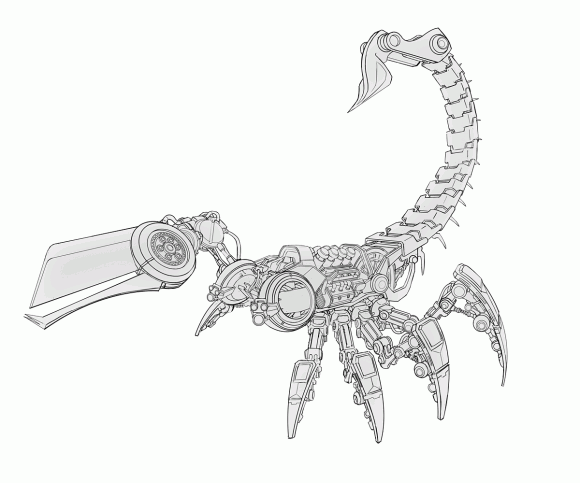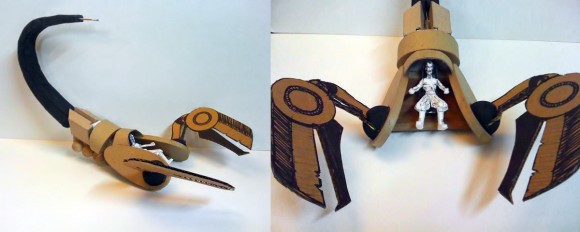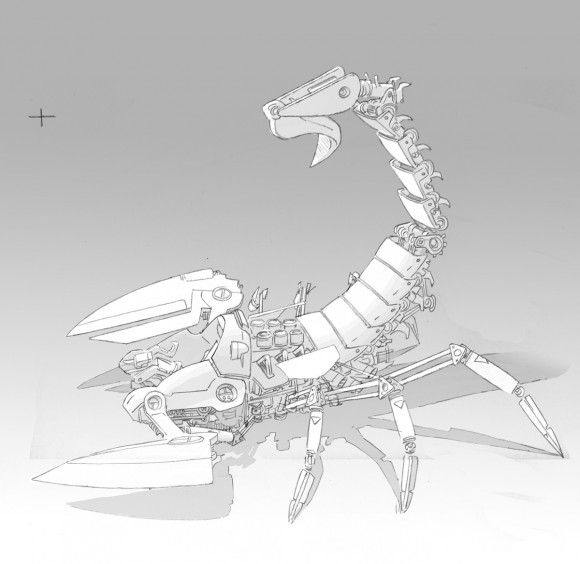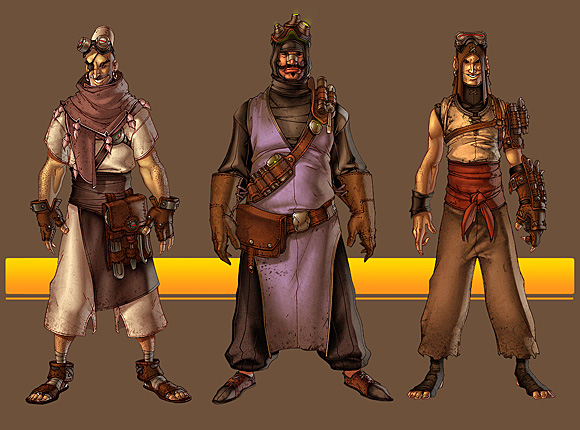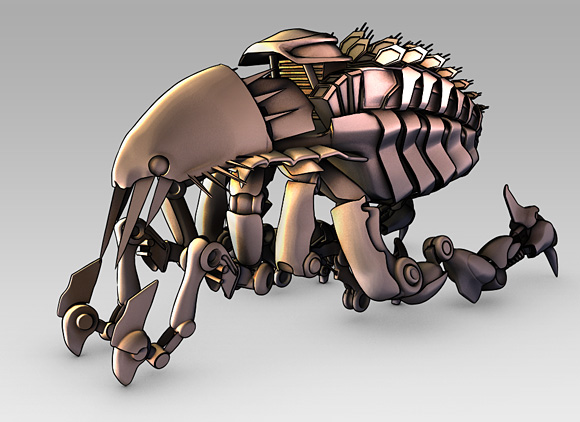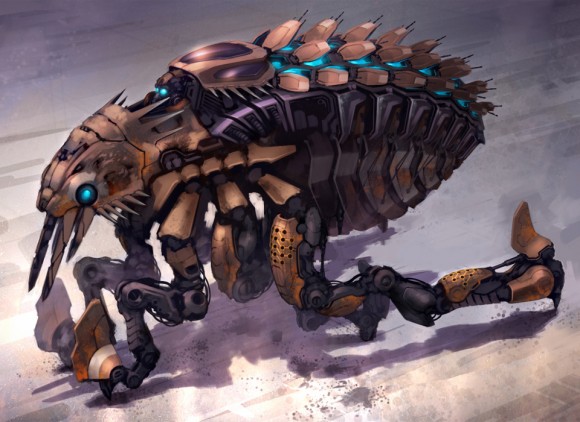The Plastic Scarab
Like the Scorpion, the Scarab started out as a physical model, even before any concept artwork was drawn up. This prototype that art director Matt Evans sculpted out of a mini trash-bin lid, salad tongs and foam rubber became the foundation for all the designs that followed:

Even late in the modeling stages, the ability to refer back to the base design was instrumental in keeping the Scarab from drifting too far from our original vision.
The pencil stage
Dermot Walshe was the first to take a crack at adapting the prototype Scarab into dieselpunk form, with this Jeep-like concept:
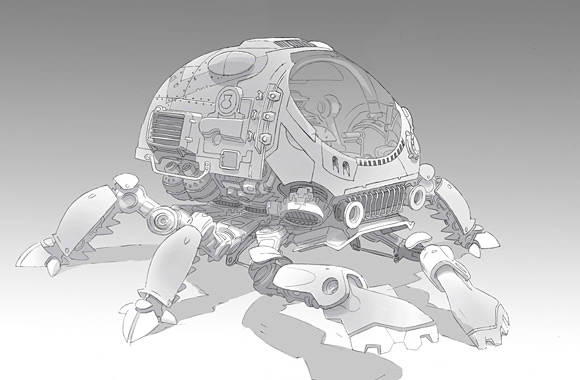
Unlike his Scorpion designs, however, we felt that Dermot’s take on the Scarab was perhaps a little too aggressive. Moreover, although the Scarab is supposed to look like it’s built out of scavenged and retrofitted machinery, the shape still needs to be instantly readable, even in motion. The Scarab’s silhouette was in need of some major streamlining.
The Ink Stage
Concept artist Roger Oda, known for his precise, technical inking style (many people assumed his drawings were celshaded 3D renders) was brought in to do precisely that. His rounded, stripped-down Scarab preserved a number of elements from Dermot’s version, while also sporting some accessories of his own—the spring-heel shock absorbers, squared-off toes and secondary headlights were all incorporated into the final model.
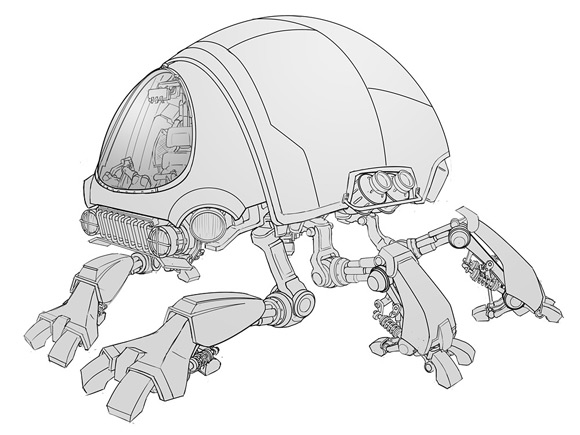
With the addition of David Ward’s armor designs, we were ready to make the move to 3D…


